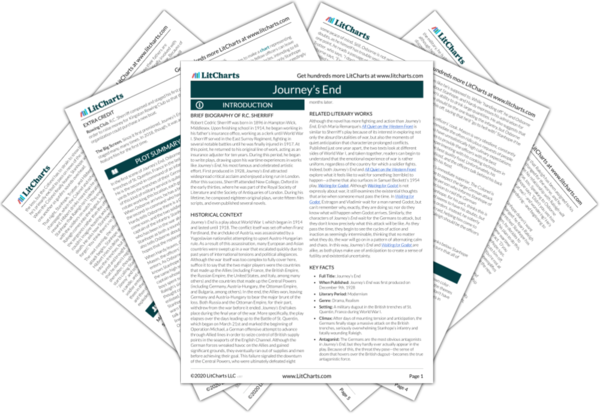Although the novel has more fighting and action than
Journey’s End, Erich Maria Remarque’s
All Quiet on the Western Front is similar to Sherriff’s play because of its interest in exploring not only the absurd brutalities of war, but also the moments of quiet anticipation that characterize prolonged conflicts. Published just one year apart, the two texts look at different sides of World War I, and taken together, readers can begin to understand that the emotional experience of war is rather uniform, regardless of the country for which a soldier fights. Indeed, both
Journey’s End and
All Quiet on the Western Front explore what it feels like to wait for something (terrible) to happen—a theme that also surfaces in Samuel Beckett’s 1954 play,
Waiting for Godot. Although
Waiting for Godot is not expressly about war, it still examines the existential thoughts that arise when someone must pass the time. In
Waiting for Godot, Estragon and Vladimir wait for a man named Godot, but can’t remember why, exactly, they are doing so; nor do they know what will happen when Godot arrives. Similarly, the characters of
Journey’s End wait for the Germans to attack, but they don’t know precisely what this attack will be like. As they pass the time, they begin to see the cycles of action and inaction as seemingly interminable, thinking that no matter what they do, the war will go on in a pattern of alternating calm and chaos. In this way,
Journey’s End and
Waiting for Godot are alike, as both plays make use of anticipation to create a sense of futility and existential uncertainty.
